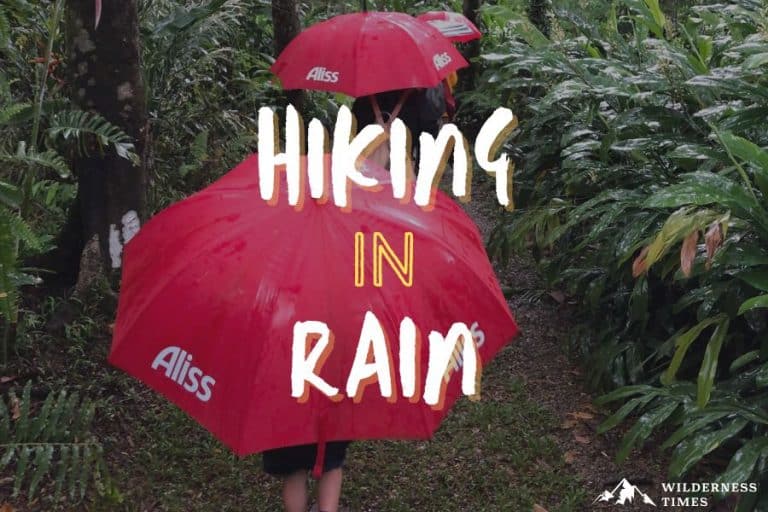“Some people feel the rain. Others just get wet.” — Roger Miller
Does this resonate with you?
If the answer is yes, you’re probably not the type of person who’s going to let a little bit of rain come in the way of a hiking or backpacking trip.
And why would you?
With a little bit of preparation and planning ahead, you can go hiking in the rain and stay safe, warm, and dry the entire time. In this article, I’m going to show you just how to do that by sharing 7 great tips that’ll keep you covered in every situation.
Let’s get started!
Gear Up
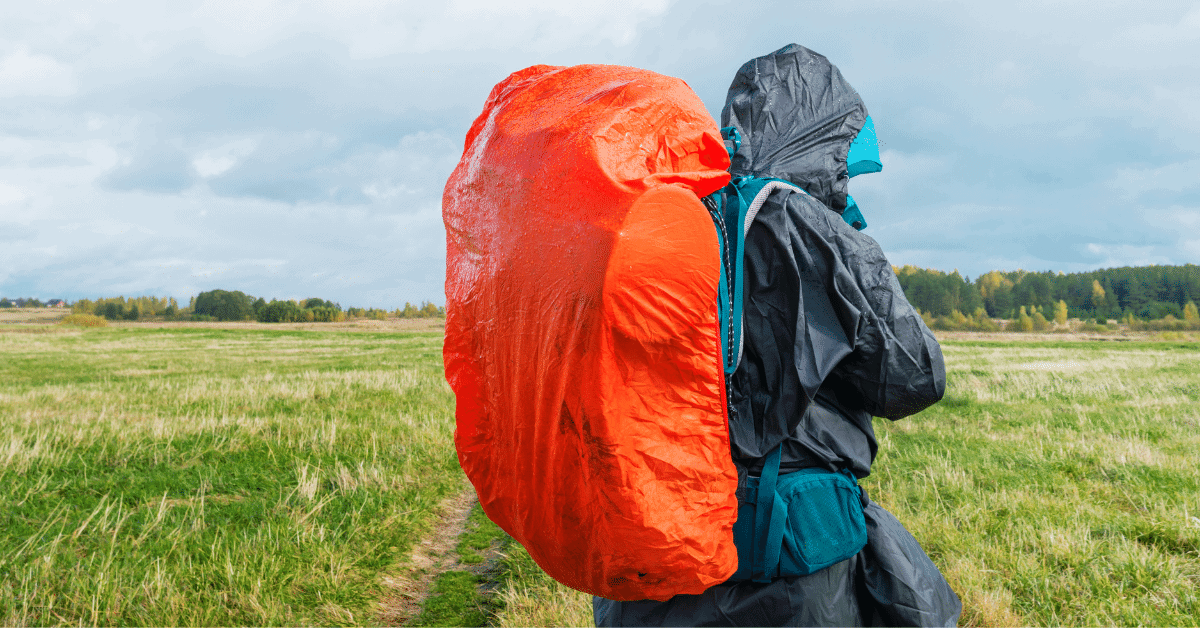
The first thing you’ll need to think about is gear. You want to make sure you’ve got all the hiking gear you need to protect yourself and your stuff from the rain.
Rain Protection Gear
To begin with, you’ll need a rain cover for your hiking backpack. These are fairly inexpensive and easy to find, but if you can’t find one you can use a garbage bag instead.
Having garbage bags on hand is a good idea in general, because you can use them for so many different things. They’re good for protecting your things from getting wet, and of course you can also use them for their original purpose – to store your trash.
For things I want to keep extra safe – I like to use lightweight dry bags. I pack the dry bag last, so it’s at the top of my backpack and I can access these things easily if I need them.
What about your electronic gadgets like your phone and camera?
Sure, you can pack them in a dry bag and they’ll be safe, but then you won’t be able to use them. That is, unless you get waterproof cases for them.
These are great, especially if you want to take pictures out on the trail while it’s raining. That is, without having to worry about destroying your camera in the process.
Other Useful Items
It pretty much goes without saying that you’ll need trekking poles, a headlamp, and supplies to treat blisters.
These are all things you need to pack when you go hiking regardless of what the weather is like. However, in wet weather, you’re more likely to have issues with blisters, so it’s even more important to make sure you’ve got ample supplies to treat them.
If you haven’t got a headlamp, you can use a flashlight. But a headlamp is always a better choice because it leaves both of your hands-free, which you’re more than likely to need on certain parts of the trail.
And trekking poles are critical when it comes to relieving pressure on your knees and helping to avoid injury, especially in wet weather.
And, finally, I seriously recommend using hand warmers to keep yourself warm. You can use them to stay warm for several hours, which can make things a lot easier if you happen to get wet and start to feel cold.
Wear The Right Clothes & Shoes
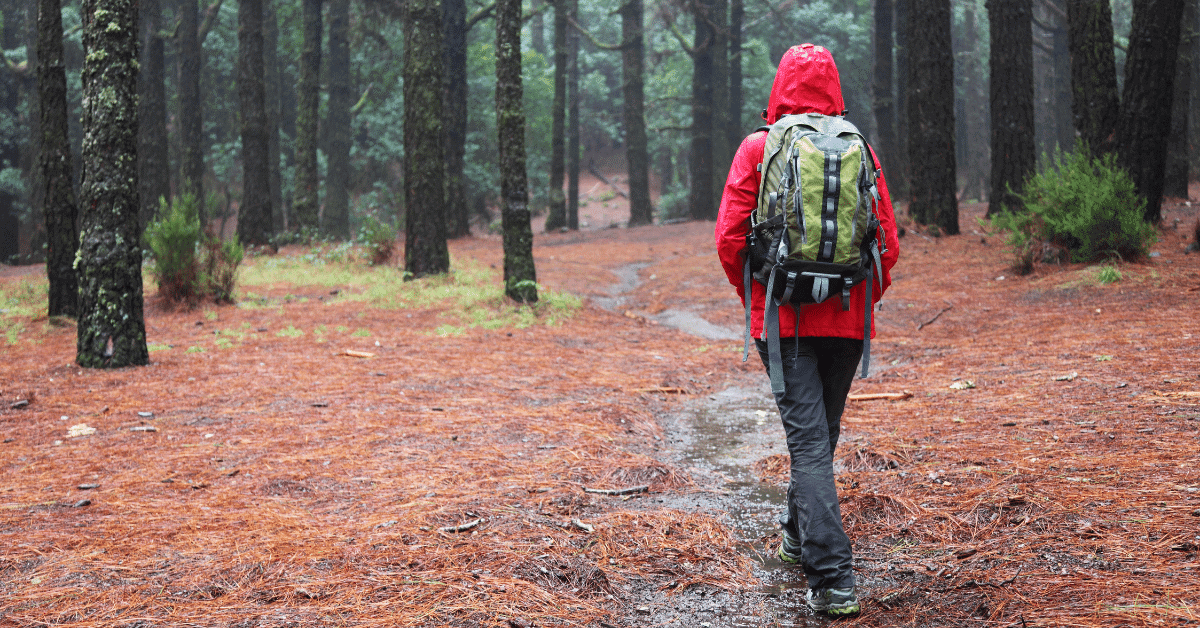
The next thing that needs to be at the top of your list of priorities is clothes.
Having the right clothing when you’re hiking in the rain is everything. If you screw this part up, you’ll be soaking wet, freezing cold, and miserable in a matter of minutes.
So, listen up.
Clothing
First of all, forget about cotton. You want to stick to moisture-wicking materials. This could be wool if you want to keep it natural, or you can go for synthetic fabrics like nylon and polyester. That goes for your socks, underwear, and the base layer that’s in direct contact with your skin.
On top of that you’ll need a jacket. If the weather isn’t too cold, you can stick to a lightweight waterproof soft-shell jacket.
If the temperatures are in the lower range, you’ll need an insulated jacket. Stick to jackets with synthetic insulation. Down insulation doesn’t do well in wet conditions. If it gets wet, it’ll lose its insulating ability and you’ll end up shivering and shaking.
If you do end up getting soaking wet, it’s good to be able to change into something dry in case you get too cold and need to warm up. That’s why you should always pack a spare set of dry clothes and a few extra pairs of dry socks, because there’s nothing worse than wet socks.
I recommend sticking to merino wool socks because they’re natural, breathable, quick-drying, and moisture-wicking.
Rain Gear
To top it all off you’ll need your rain gear to keep you nice and dry underneath. This could be a poncho or a rain jacket in combination with a pair of rain pants. Or alternatively, you can wear an all-in-one rain suit that covers you from top to toe.
You’ll also want to pack a rain cap to keep your face protected. Don’t rely on the hood of your rain jacket or poncho. It might keep your hair dry, but it’ll do little to keep your face dry. A rain cap will keep the rain out of your face, which will make it a lot easier to see where you’re going, for one.
Always test your rain gear before you go hiking. Pour a little bit of water on each piece of clothing to make sure it rolls off the surface and none of it absorbs. If some of the water is absorbed, then you’ll need to renew the DWR (durable water repellent) coating. This is fairly easy and cheap to do by yourself at home.
Footwear & Gaiters
As far as footwear goes, you’ve got two options. You can either wear waterproof hiking boots, or lightweight mesh hiking shoes.
If you’re hiking in cold weather, waterproof hiking boots will definitely be a smarter choice, because they’ll keep your feet dry for longer. However, they take forever to dry out, so once they’re wet there’s little you can do to keep your feet warm.
If the weather isn’t particularly cold – just wet – you’re better off going for a lightweight pair of mesh hiking shoes, because they dry fairly quickly. They’re also well ventilated, so your feet will be able to breathe a lot better than they would in a wet pair of hiking boots.
Whichever type of footwear you end up going for, you should definitely also wear some gaiters. They’ll keep your socks dry, as well as the parts of your shoes that might not be waterproof. Gaiters are an absolute must for hiking in the rain.
Choose Your Trail Carefully
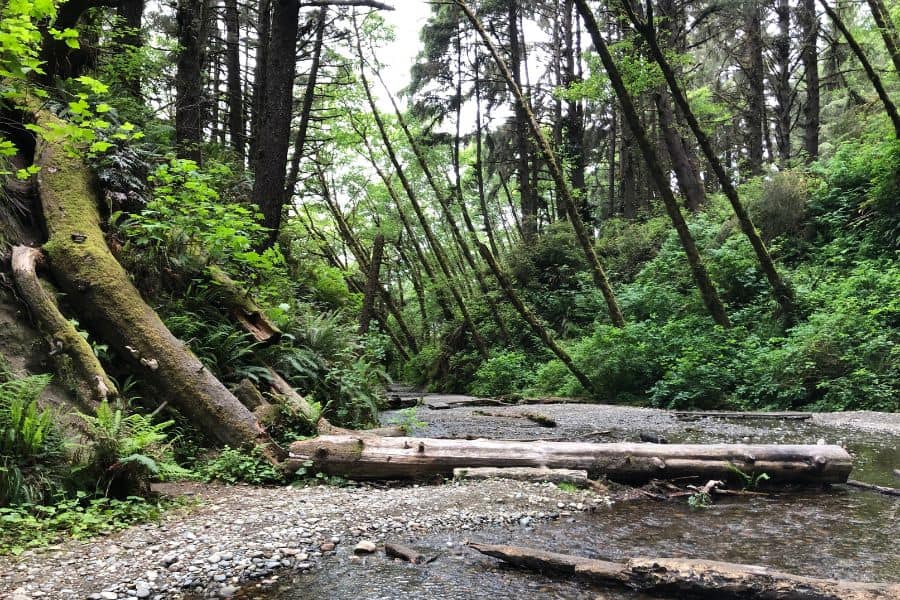
Some trails are better for hiking in the rain than others.
For starters, certain trails are downright dangerous in wet conditions. A steep, muddy trail with slippery slopes is going to be challenging, so you might want to give those a miss and save them for drier conditions.
And anyway, visibility is poor in rainy weather, so hiking to the top of a mountain might be a bit anticlimactic anyway. You won’t be able to see much, which could be disappointing if you’re expecting a breathtaking view and all you get is a thick fog.
Instead, go for forest trails where the treetops will provide you with protection from the rainfall. It’s beautiful in the forest even in foggy weather, and there’s less of a chance of falling and injuring yourself than there is on a mountain summit.
Read: How to Research Your Hiking Trail
Keep An Eye On The Forecast
We all know that the weather forecast can change several times a day. That’s why it’s a good idea to monitor it frequently to keep track of any changes.
Having some idea of what kind of weather lies ahead can help you prepare better. It can also help you make the right decisions along the way.
For example, deciding on whether to keep going or turn around and head back is much easier if you know what the weather will be like in the next couple of hours.
Take Cover From Lightning
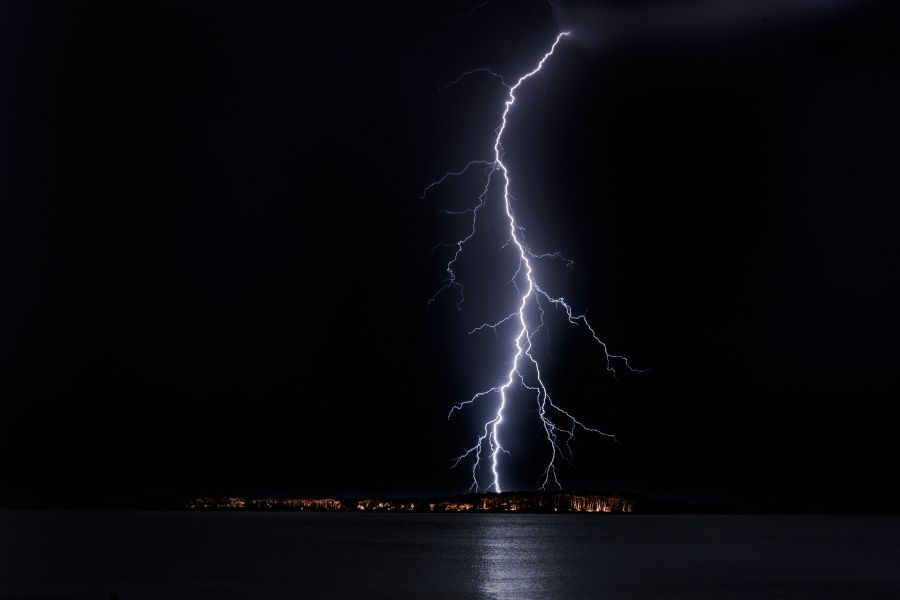
If your hike in the rain turns into a hiker in a thunderstorm, you’ll want to do everything you can to avoid getting struck by lightning.
As unlikely as it might seem, you just never know. After all, nearly 50 people are killed each year by lightning on average, and hundreds are injured.
So what can you do to stay safe if you hear thunder?
First of all, head downhill. Lightning is much more likely to strike at the top of a mountain than it is lower down.
And, lastly, stay away from open spaces like plains, meadows, and fields. Your best bet is to stay in the forest underneath the treeline, while staying a safe distance away from the tallest trees. These trees are also more likely to get hit by a lightning bolt, because they’re so high up.
Also See: Camping in a Thunderstorm (How To Stay Safe)
Look Out For Signs Of Hypothermia
If your clothes get wet and you start to get cold, you might be at risk of getting hypothermia. It’s important to know what the signs are, so that you can react quickly and get to help as soon as possible.
So what are the signs?
Slurred speech and mumbling, slow and shallow breathing, a weak pulse, drowsiness, a lack of coordination, confusion, and loss of consciousness are some of the main symptoms.
If you notice any of these things in yourself or any of your fellow hikers, seek help immediately.
Also, keep in mind that we shiver when we get cold. Excessive shivering can be a sign of the onset of hypothermia, but once you stop shivering – that’s when you should really be concerned.
If someone is severely cold and they stop shivering altogether, they’ve probably already got a bad case of hypothermia. Your main priority should be getting them seen by a medical professional as soon as possible. In the meantime, get inside a sleeping bag or anything else that can insulate you together with the person skin to skin. Using body heat is the quickest way to warm someone up.
Know When To Quit
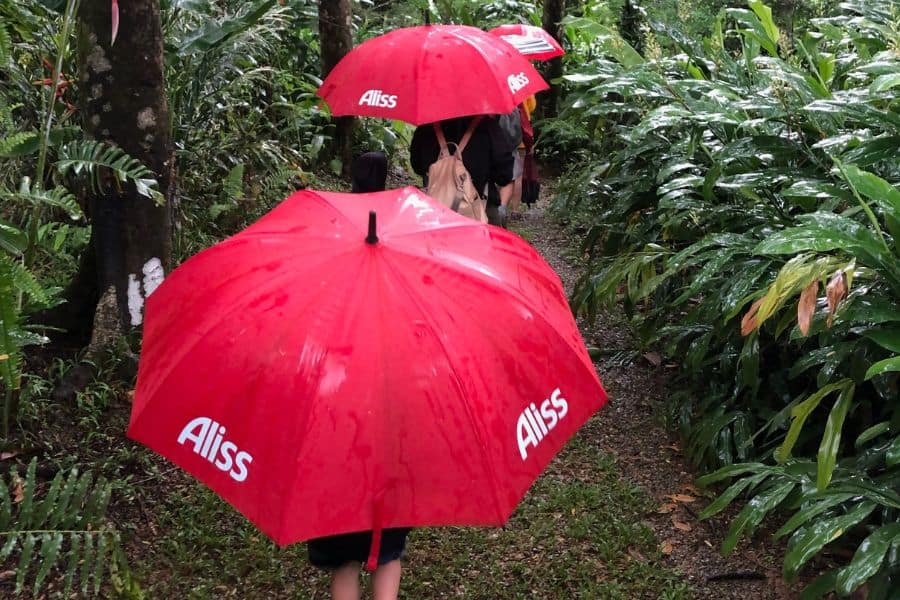
If you’re someone who doesn’t like to quit, I get it. I’m prepared to endure all kinds of things to get to the end point I set out to reach.
Still, you should never lose sight of the fact that you’re out there to have a good time. Completing the trail isn’t everything. Knowing when to turn around and head back is a much greater accomplishment.
If the hike becomes too hazardous, or you start to get too cold and don’t feel comfortable going forward, start heading back.
Make sure that you and everyone you’re out on the trail with are feeling happy and comfortable at all times. If anyone isn’t – it’s time to head back to the trailhead.
What Now?
If you keep all of these tips in mind, there’s no reason why you can’t have a great time hiking in the rain.
Just make sure you’ve got the right hiking gear, dress wisely, choose a suitable trail, keep an eye on the weather forecast, and be careful of lightning and hypothermia. If you take measures to cover all of these things, you can have a great time exploring the wilderness, even in a downpour.
Now, if you’re hiking for several days, you’re going to need a waterproof tent, too. If you haven’t already got one, you can check out some of the best waterproof tents on the market today in this review article we wrote.
Expecting snow? Check out our tips for hiking in snow.


